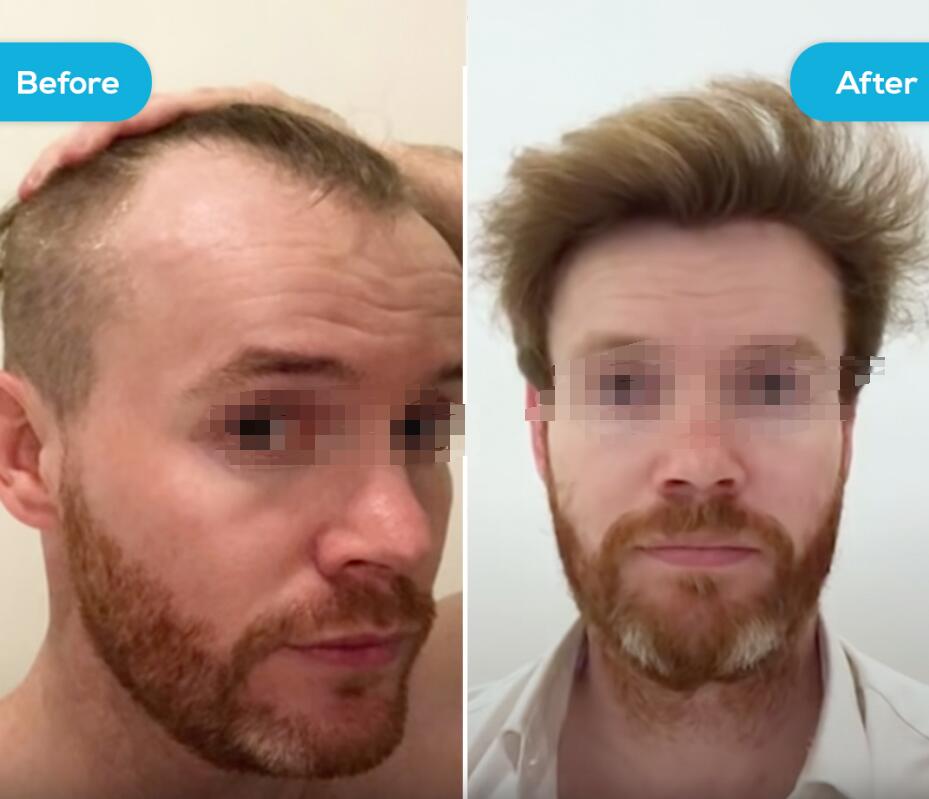
The "top priority" of contemporary young people, how to maintain hair scientifically?
2022-08-31 10:02The "top priority" of contemporary young people, how to maintain hair scientifically?
According to the data of "White Paper on Chinese Scalp Health"
The number of hair loss in my country has exceeded 250 million
About 163 million men, about 88 million women
Equivalent to 1 in 4 men losing hair
1 in 8 women loses hair
And the proportion of hair loss before the age of 30 is as high as 84%
Hair loss has shown a clear trend of younger age.
"Protecting the hairline" has become the primary task of contemporary young people So, how exactly do you "save" your hair?
What type of hair loss are you in?
Types and symptoms of hair loss
According to the damage of hair follicles, hair loss is mainly divided into "non-scarring alopecia" and "scarring alopecia".
①Androgenetic alopecia
Basic etiology
Genetics, androgens (dihydrotestosterone), mental stress, scalp microenvironment, etc.
The most common, formerly known as seborrheic alopecia, its pathogenesis is closely related to androgen dependence and genetic factors. The main clinical manifestations are the receding of the forehead hairline or the persistent decrease in the density of the hair on the top of the head. People with androgenetic alopecia often do not feel an increase in their daily hair loss, but instead find that their hair is "unwittingly thinning". Often accompanied by increased scalp oil secretion, some patients may be combined with scalp seborrheic dermatitis, manifested as scalp erythema, itching, increased dandruff and other symptoms.

②Alopecia areata
Basic etiology
Stress (psychological stress, etc.), autoimmune disorders, genetic susceptibility, etc.
The clinical manifestations are sudden round or quasi-circular hair loss patches with clear boundaries, commonly known as "ghost shaving heads", which can be single or multiple, and can involve the entire scalp or even the whole body hair, but the skin at the hair loss site is generally normal. Alopecia areata is an autoimmune disease, the etiology of which is still unclear, and may be related to factors such as genetics, stress, allergies, and autoimmunity. At the same time, patients may also be accompanied by thyroid disease, vitiligo, atopic dermatitis and other immune diseases.
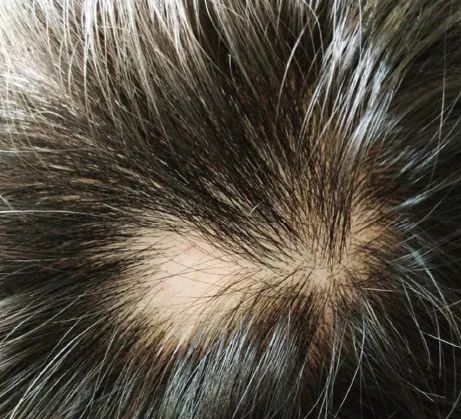
③ telogen effluvium
Basic etiology
Physiological factors (such as postpartum), abnormal stimuli (such as high fever, surgical trauma, psychological stress, excessive dieting, etc.), endocrine (such as abnormal thyroid), malnutrition (such as anemia), drugs and other systemic diseases.
The clinical manifestations are acute or chronic diffuse hair loss. At least 80% of the normal scalp hair follicles are in a growing state, so the hair will not fall out synchronously, but under certain stimuli, many patients will suddenly find that their hair loss is significantly more than usual, especially when combing or bathing, or even The daily amount of hair loss can reach nearly 1,000 strands. The decrease in hair density was more pronounced in the bilateral temporal regions than in other regions. Although the density of the hair is less than normal, the diameter of the hair does not change abnormally.
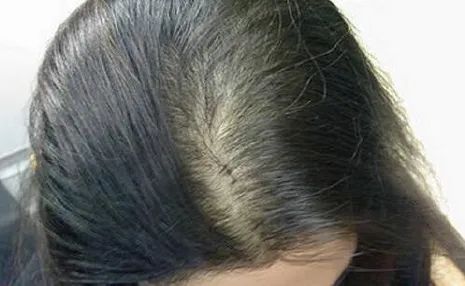
④ Hair loss during growth period
Basic etiology
Chemotherapy, radiotherapy, heavy metal poisoning, drugs, etc.
Growth phase hair loss is often seen after chemotherapy and radiotherapy, and may also be associated with heavy metal poisoning or oral administration of certain cytotoxic drugs. Under the action of the above factors, the metabolic process of hair follicles is affected, and eventually it is manifested as diffuse massive hair loss, and some patients may even lose their hair completely. Hair regrows in most patients after removing the causative factor.
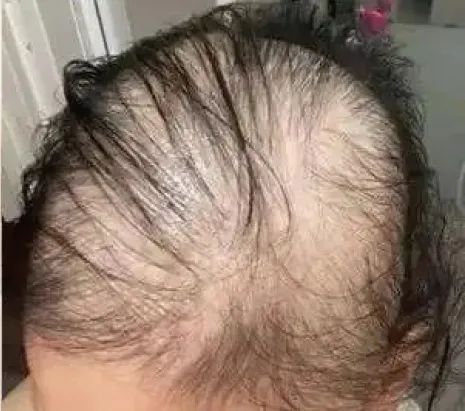
⑤Cicatricial alopecia
Basic etiology
Genetics, environment, immunity, sex hormones and mental and psychological factors.
It refers to the destruction of hair follicles and scarring of the scalp under various reasons, resulting in permanent scarring of alopecia. Primary cicatricial alopecia is caused by the primary disease of the scalp, and it is mostly an inflammatory disease with hair follicles as the main target. Secondary scarring alopecia is mainly related to infection, trauma and other factors.
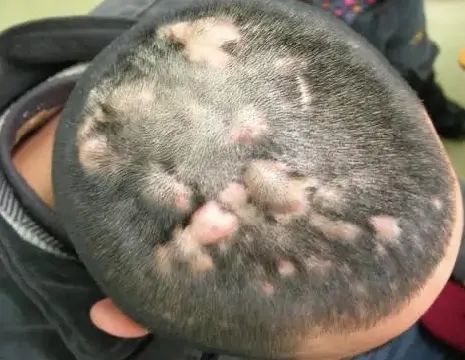
02.
Self-check tips!
Hair loss check method
At present, there are several methods for hair loss inspection: hair pulling test, dermoscopy, hair microscope, scalp histopathological examination, and serological examination. One of the most commonly used is the "pull test".
Pull test
It is one of the most commonly used hair examinations in dermatology clinics. The method is to hold a small amount of hair (about 40 to 60 hairs) from the scalp with thumb and index finger without shampooing for 3 to 5 days, and then quickly and gently. Pull the hair evenly from the proximal end of the scalp towards the ends of the hair. Repeat this several times on several different areas of the scalp. If more than 6 to 10 hairs are pulled out each time (that is, the number of hairs pulled out is > 10%), the hair pulling test is positive, indicating active hair loss.

03.
scientific prevention
conventional treatment
Conventional treatments for hair loss mainly include oral or topical drugs, physical therapy, and hair transplantation. After the symptoms of hair loss appear, the patient should visit a dermatology clinic or a hair specialist clinic in time, and conduct active treatment under the guidance of a doctor after a clear diagnosis.
①Control and eliminate incentives
Controlling and eliminating the incentives can effectively improve the clinical symptoms of telogen effluvium and other diseases, and promote disease recovery.
②Drug therapy
The first-line treatment of [androgenetic alopecia] includes oral: finasteride (male patients), spironolactone or cyproterone (female patients); topical minoxidil, etc.
[Alopecia areata] drug treatment is:
Topical or systemic glucocorticoids and topical minoxidil are mainly used; immunomodulatory drugs such as compound glycyrrhizin are orally administered.
[Refractory alopecia areata] When necessary, new small molecule drugs such as immunosuppressants or JAK inhibitors should be systematically applied.
③Physical therapy
Physical therapy methods such as low-energy lasers and microneedling can promote hair growth by increasing the nutrient supply of the scalp, promoting the transformation of hair follicles from the resting phase to the anagen phase, and prolonging the duration of the anagen phase. It is widely used in androgenetic alopecia, inactive alopecia areata, telogen effluvium and other hair loss diseases. Clinically, a combination of drugs and physical therapy is often used to achieve the best effect.
①Low-energy laser therapy
It is a kind of physical therapy with high safety and strong combined treatment function. It uses low-energy laser with wavelengths of 650nm and 670nm as the treatment light source. On the basis of drug treatment, combined with low-energy laser treatment for more than 3 months, it is effective in controlling seborrheic symptoms. Dermatitis and prevention of various types of hair loss have significant effects.
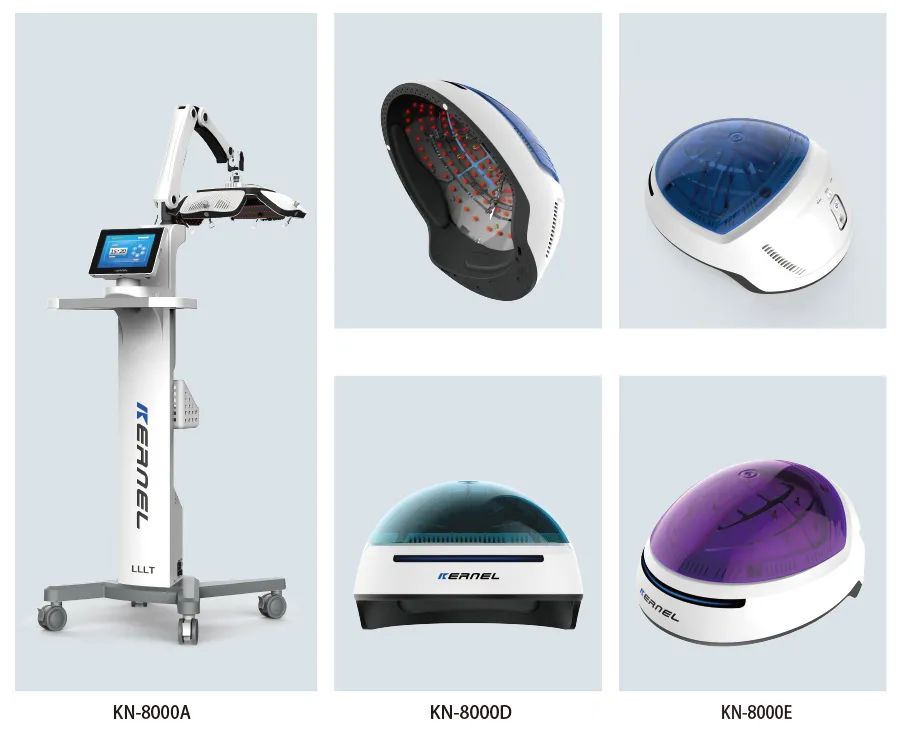
②Scalp microneedling treatment
Scalp microneedling is a safe and effective method for adjuvant treatment of hair loss. The principle is to use fine needles to puncture the scalp and cause micro-damage to the epidermis. During the process of repair and regeneration of the epidermis, some growth factors and proteins will be released, which is beneficial to Stimulates the activation of hair follicle cells and increases the blood supply to the hair follicle. At the same time, the fine needles form micro-pores in the stratum corneum of the skin, which can increase the penetration and absorption of external medicines, which is conducive to enhancing the effect of topical administration, thereby promoting hair growth.
⑤Other treatments
Including autologous platelet-rich plasma injection, hair transplantation and traditional Chinese medicine treatment. For patients with ineffective or ineffective treatment methods above, the use of hair growth fibers, hair clips, wigs, etc. can be appropriately considered to improve the appearance.
04. Daily Precautions
Preventing and treating hair loss also requires maintaining a healthy lifestyle. In daily life, you should pay attention to:
1. Keep a relaxed state of mind and avoid prolonged mental stress and anxiety.
2. Balanced nutrition, daily intake of fresh fruits, vegetables and sufficient protein.
3. Choose a comfortable hair clip and don't tie your hair too tightly.
4. Choose the correct way to comb your hair, do not comb your hair too hard.
5. Choose a shampoo and conditioner that suits your hair type.
6. Minimize hair dyeing, perming, and avoid exposure to the sun.
In a word, in a word
"Scientific hair care starts now"
Don't let today's bad habits
Be the last straw that crushes you tomorrow~
